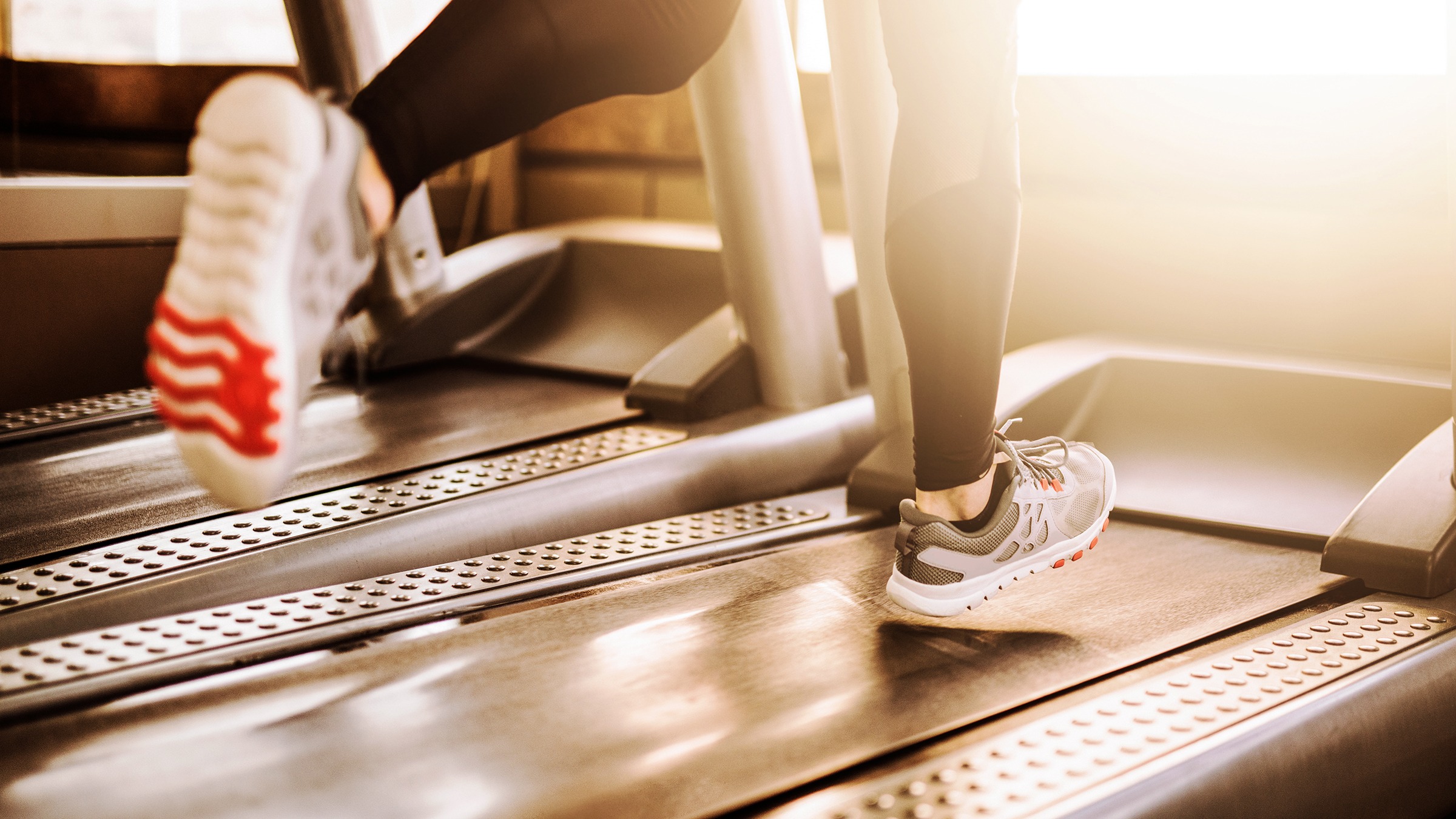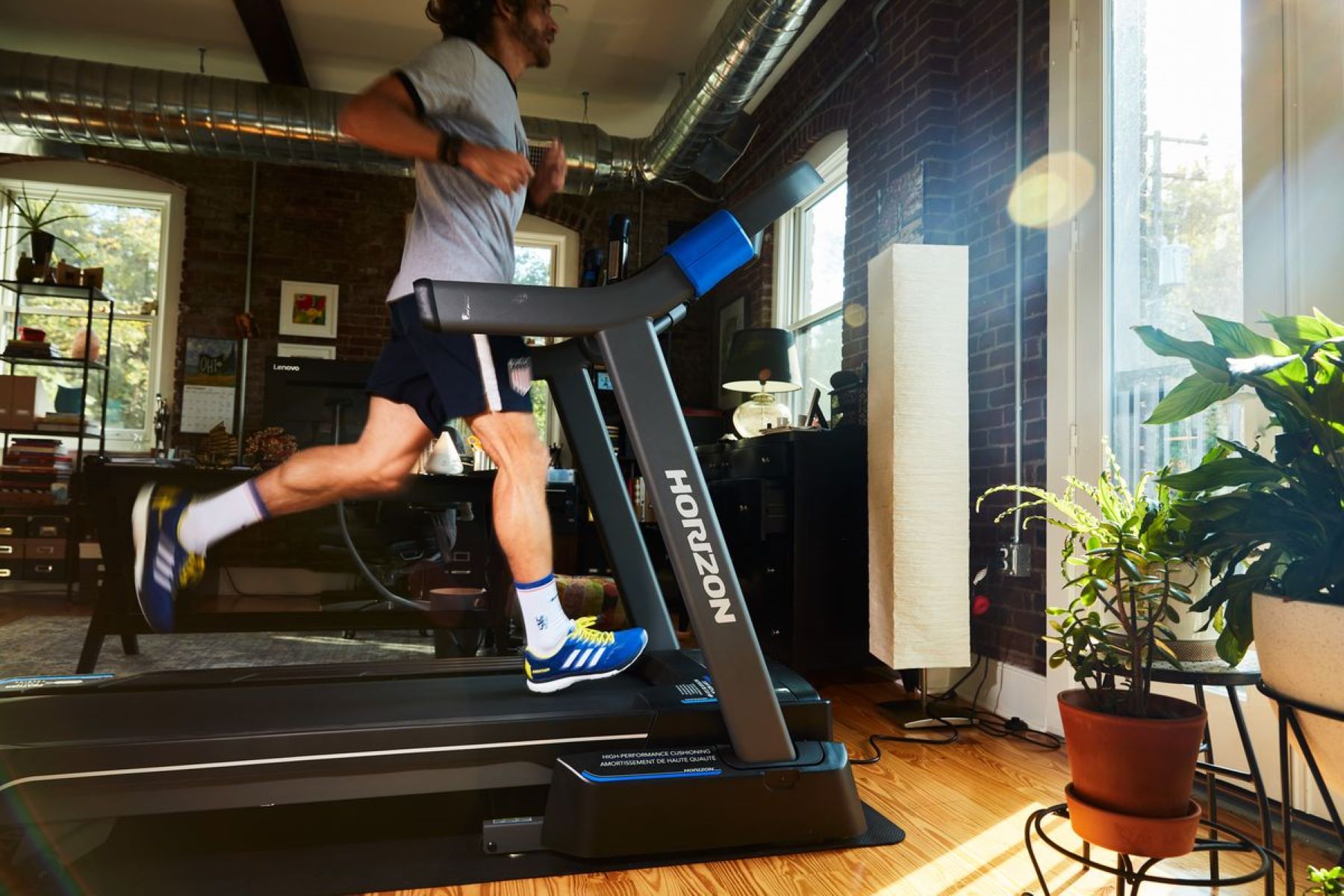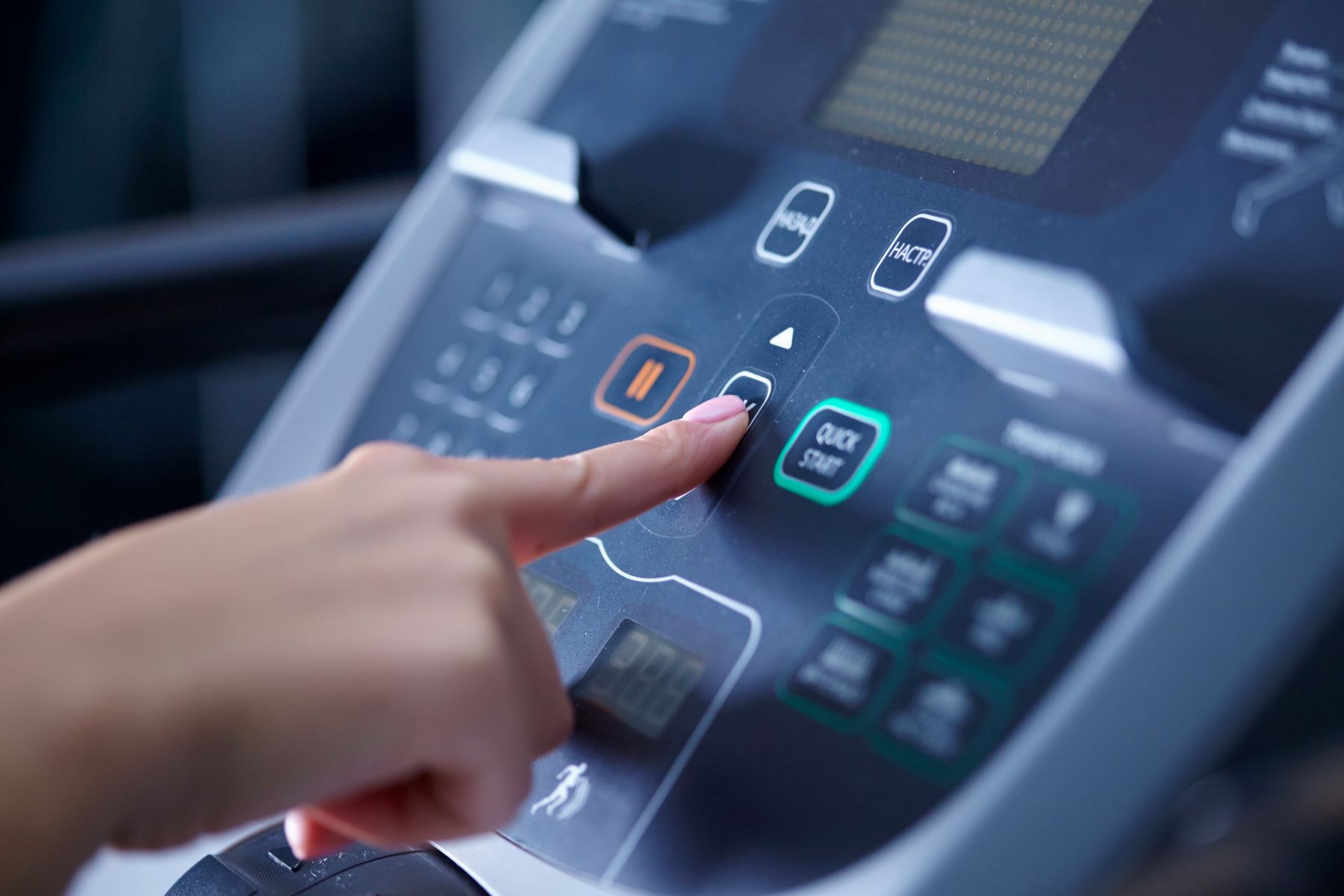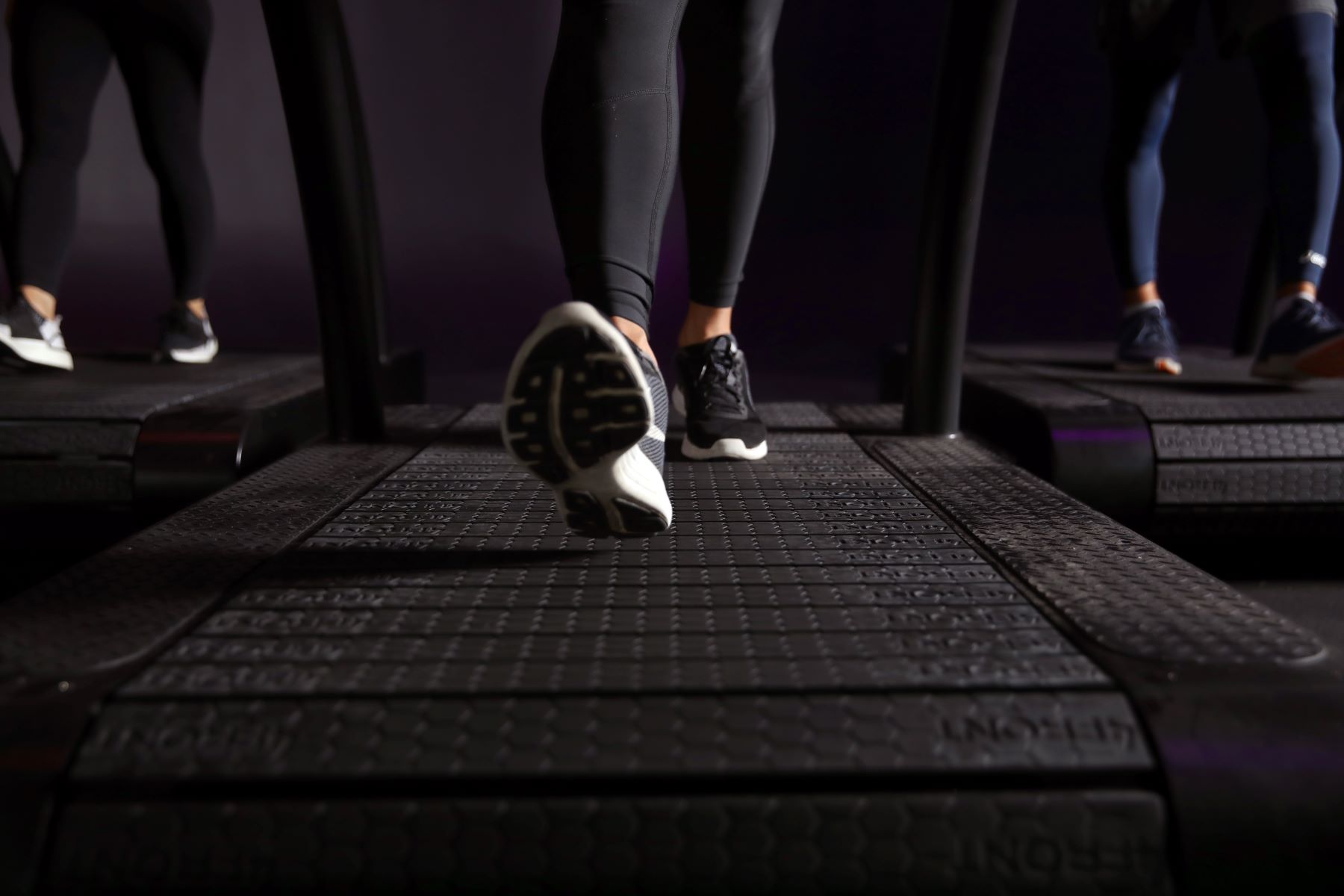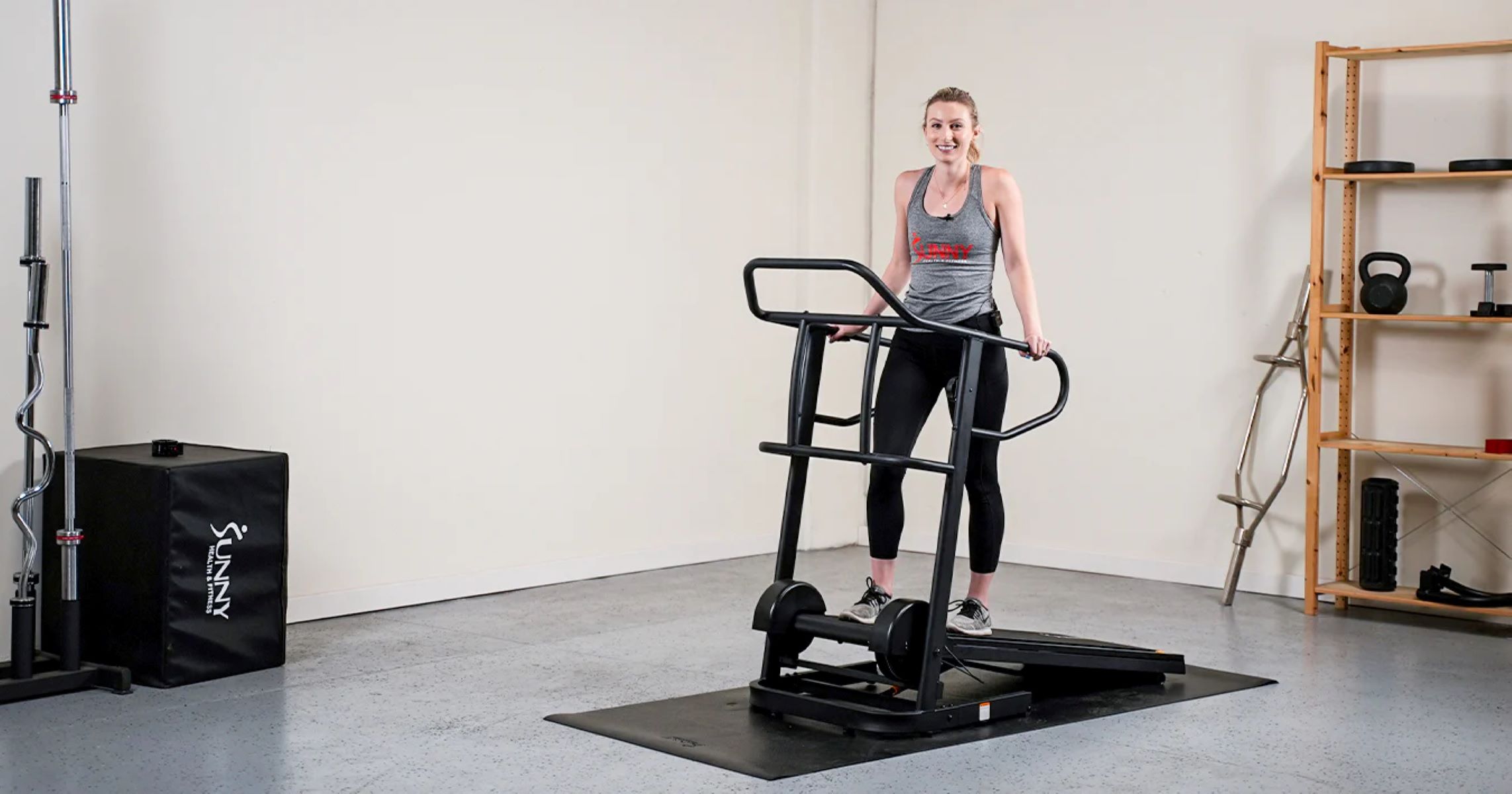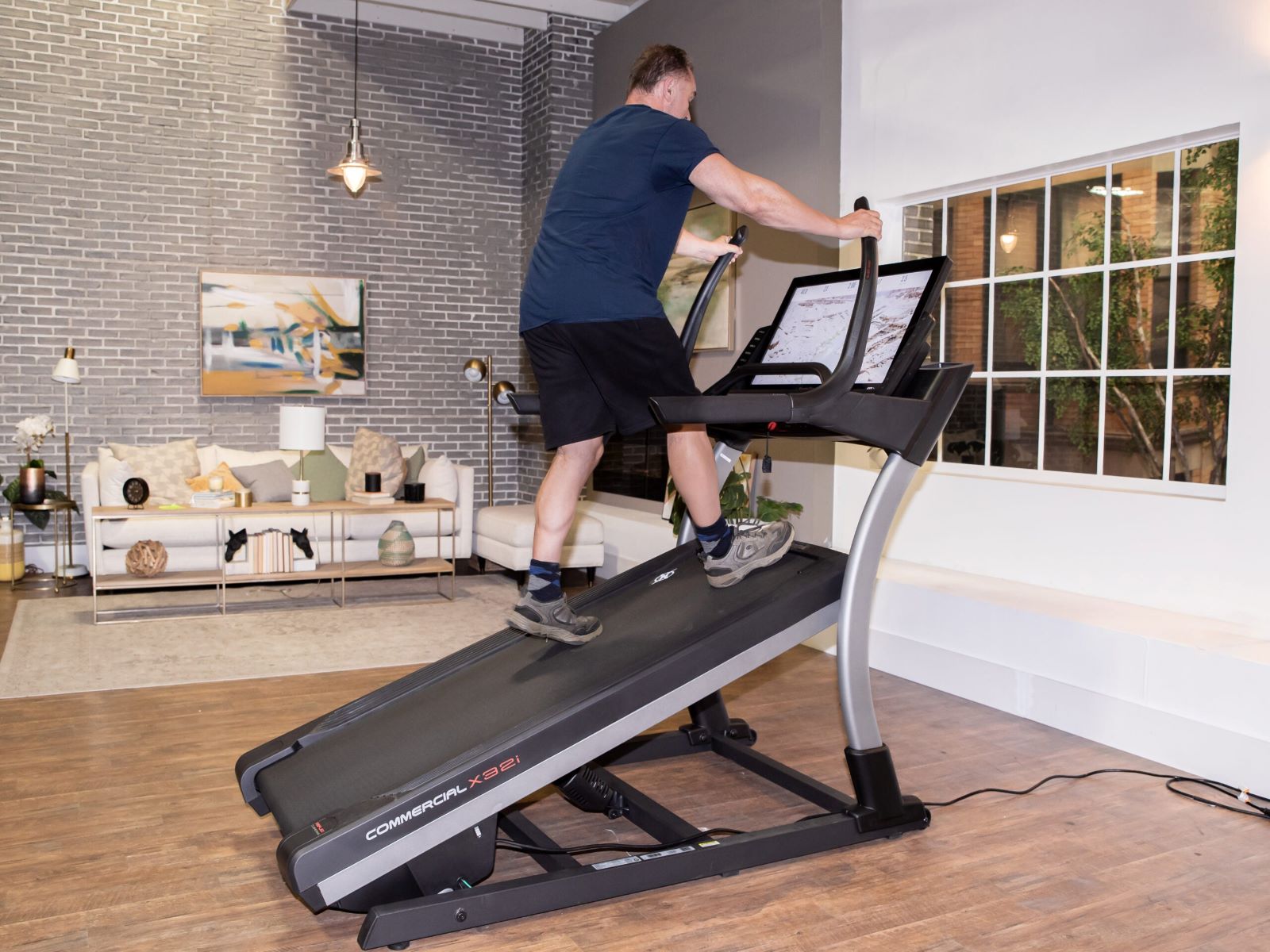Home>Misc>Featured>How To Do Interval Training On A Treadmill
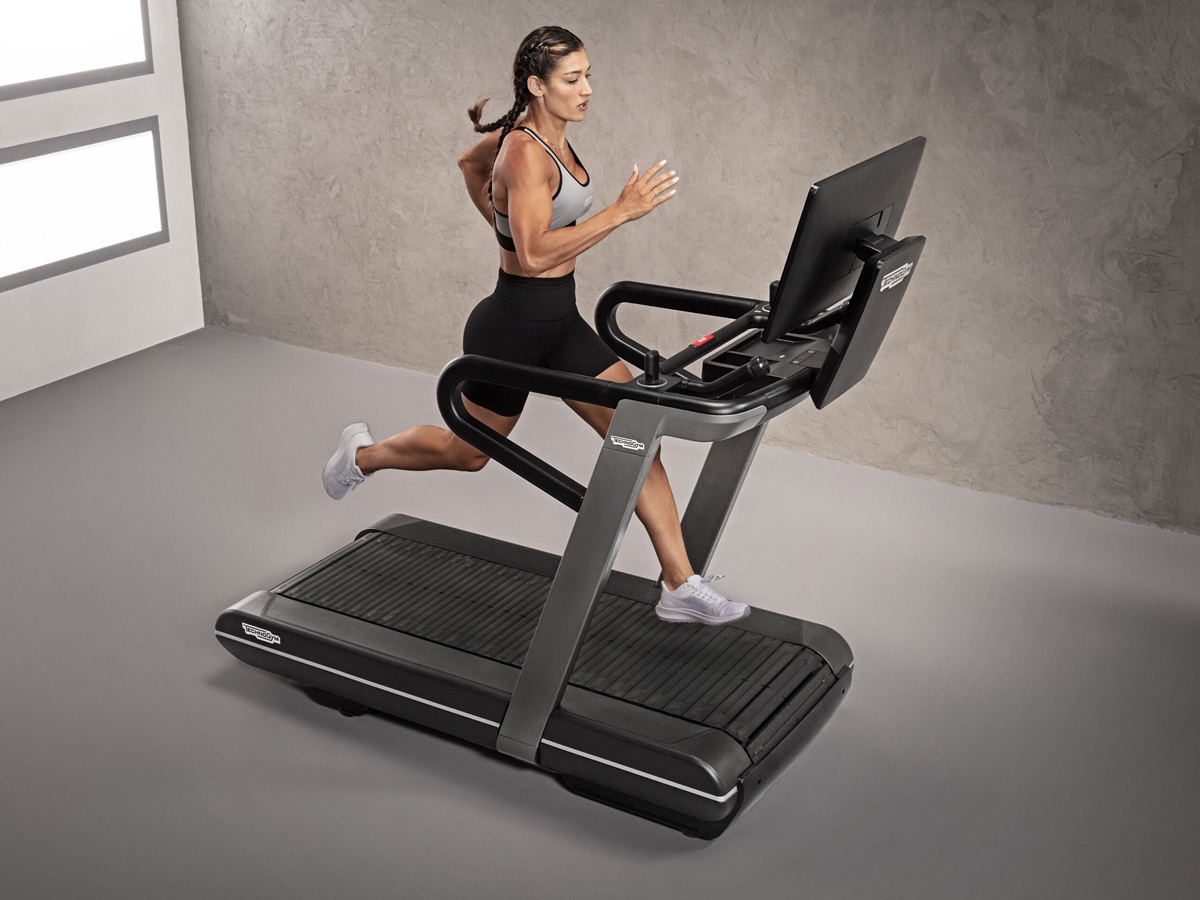

Featured
How To Do Interval Training On A Treadmill
Modified: August 21, 2023
Learn how to incorporate interval training into your treadmill workout to maximize your fitness results. Discover the benefits of Featured workouts and start achieving your fitness goals today!
Introduction
Welcome to the world of interval training on a treadmill! If you’re looking for an effective and time-efficient way to boost your cardiovascular fitness and burn calories, interval training is the way to go. And what better place to do it than on a trusty treadmill?
Interval training involves alternating between periods of high-intensity exercise and periods of rest or lower-intensity exercise. This type of training is known for its ability to elevate your heart rate, improve endurance, and increase calorie burn.
Why choose a treadmill for interval training? Treadmills offer several advantages over other forms of exercise equipment. Firstly, they provide a controlled and consistent surface for running, which helps reduce the risk of injury. Secondly, treadmills offer diverse workout options, including adjustable speed and incline settings, allowing you to customize your interval training routine to suit your fitness level and goals.
In this article, we’ll guide you through everything you need to know about interval training on a treadmill. We’ll cover the benefits, how to find the right treadmill, safety precautions, setting up your treadmill for interval training, warm-up and cool-down exercises, and even tracking your progress. So, let’s lace up our shoes, hop on the treadmill, and get ready to take your workouts to the next level!
Benefits of Interval Training on a Treadmill
Interval training on a treadmill offers a wide range of benefits that can help you achieve your fitness goals. Whether you’re a beginner or an experienced athlete, incorporating interval training into your treadmill workouts can take your fitness to new heights. Here are some key benefits:
- Increased calorie burn: Interval training on a treadmill causes your body to work harder, which results in more calories burned during and even after your workout. The high-intensity intervals spike your heart rate, boosting your metabolism and helping you burn fat more efficiently.
- Improved cardiovascular fitness: The alternating periods of intense exercise and rest challenge your cardiovascular system, increasing your VO2 max (the maximum amount of oxygen your body can use during exercise). This helps improve your overall endurance and stamina, making everyday activities feel easier and allowing you to push harder during other workouts.
- Time-efficient workouts: Interval training on a treadmill allows you to get an effective workout in less time. By incorporating short bursts of high-intensity exercise, you can achieve better results compared to longer, steady-state cardio sessions. This is perfect for those with busy schedules or anyone looking to maximize their workout time.
- Variety in workouts: Treadmills offer a variety of settings and features that can be utilized for interval training. You can adjust the speed and incline to create different levels of difficulty, keeping your workouts challenging and preventing boredom. This versatility allows for endless possibilities to keep your workouts exciting and engaging.
- Increased fat burning: Interval training on a treadmill has been shown to promote greater fat burning than steady-state cardio exercises. The intense bursts of exercise during the high-intensity intervals cause your body to rely on stored fat for energy, helping you shed unwanted body fat and achieve a leaner physique.
- Mental stamina: Interval training on a treadmill not only challenges your physical endurance but also tests your mental resilience. Pushing yourself through the high-intensity intervals and resisting the urge to slow down or stop builds mental strength and discipline, which can carry over to other areas of your life.
With these numerous benefits, it’s no wonder that interval training on a treadmill has gained popularity among fitness enthusiasts of all levels. So, why not give it a try and experience the incredible advantages for yourself?
Finding the Right Treadmill
When it comes to interval training on a treadmill, finding the right equipment is crucial for a safe and effective workout. Here are some factors to consider when looking for the perfect treadmill:
- Size and space: Assess the available space in your home or gym to determine the appropriate size of the treadmill. Consider the dimensions and whether it will fit comfortably in your chosen location. Additionally, check if the treadmill can be folded or stored upright to save space when not in use.
- Weight capacity: Pay attention to the weight capacity of the treadmill to ensure it can support your body weight. Most treadmills have weight limits between 250-400 pounds, so choose one that accommodates your needs.
- Motor power: Look for a treadmill with a motor that provides sufficient power for interval training. A motor with a higher horsepower (HP) rating will be able to handle the increased intensity and speed during your workouts. Ideally, aim for a motor with a minimum of 2.5 HP.
- Speed and incline range: Interval training involves alternating between different speeds and incline levels. Make sure the treadmill you choose offers a wide range of speed options, typically between 0.5-12 mph, to accommodate both your warm-up and high-intensity intervals. Additionally, check if the treadmill has adjustable incline settings to add variety and challenge to your workouts.
- Cushioning and shock absorption: Good cushioning and shock absorption are essential for protecting your joints and reducing the impact on your body. Look for a treadmill with adequate cushioning technology to minimize the risk of injuries and provide a comfortable running surface.
- Console and features: Consider the console features and controls on the treadmill. Look for an easy-to-use interface with clear display screens that show important workout data such as time, distance, speed, and heart rate. Additional features like built-in workout programs, Bluetooth connectivity, and entertainment options can also enhance your treadmill experience.
- Budget: Determine your budget and prioritize the features that are most important to you. Treadmill prices can vary greatly, so consider your needs and invest in a quality machine that will withstand the demands of interval training.
It’s also worth considering reading reviews and recommendations from trusted fitness sources or consulting with fitness professionals to ensure you choose a treadmill that fits your specific requirements. Remember, finding the right treadmill is an investment in your health and fitness journey, so take the time to make an informed decision.
Safety Precautions before Starting Interval Training
Prioritizing safety is essential before embarking on any exercise program, especially high-intensity interval training on a treadmill. Here are some safety precautions to keep in mind:
- Consult your healthcare provider: If you have any underlying medical conditions or haven’t exercised for an extended period, it’s important to consult with your healthcare provider before starting interval training. They can assess your fitness level and provide guidance on suitable workout intensities and durations.
- Warm-up: Always start your treadmill workout with a proper warm-up. Spend 5-10 minutes engaging in light cardio exercises like brisk walking or gentle jogging to increase blood flow to the muscles and prepare your body for the upcoming workout.
- Proper footwear: Invest in a good pair of running shoes that provide adequate support and cushioning. Proper footwear helps reduce the risk of injuries and provides stability while running or performing high-intensity exercises on the treadmill.
- Hydration: Stay hydrated before, during, and after your workouts. Drink water or a sports drink to replenish fluids lost through sweat. Keep a water bottle nearby to ensure easy access during your interval training session.
- Posture and form: Maintain proper posture while running on the treadmill. Keep your back straight, head up, and shoulders relaxed. Avoid leaning forward or overstriding, as this can put unnecessary stress on your joints and lead to injuries.
- Gradual progression: If you’re new to interval training, start gradually and gradually increase the intensity and duration of your intervals over time. This allows your body to adapt and reduces the risk of strain or overuse injuries.
- Stay focused: Avoid distractions while running on the treadmill. Pay attention to your form, speed, and surroundings to prevent accidents. If you need to adjust settings or change speed, do so carefully without losing focus on the workout.
- Listen to your body: It’s essential to listen to your body and respect its limits. If you experience pain, dizziness, or shortness of breath during your workout, stop immediately and seek medical attention if needed.
- Cool-down: Don’t forget to cool down after your interval training session. Gradually decrease the speed and incline of the treadmill and engage in light stretching exercises to help your body recover and prevent muscle tightness.
- Clean and maintain the treadmill: Regularly clean and maintain your treadmill to ensure safe and smooth operation. Follow the manufacturer’s guidelines for maintenance, lubrication, and belt adjustment to prolong the lifespan of your treadmill.
By following these safety precautions and being mindful of your body’s needs, you can reduce the risk of injuries and enjoy a safe and effective interval training experience on your treadmill.
Setting up the Treadmill for Interval Training
Before diving into your interval training session on the treadmill, it’s important to properly set up the machine to maximize your workout and ensure a safe experience. Here are some steps to follow for setting up your treadmill:
- Choose the right location: Place your treadmill in an area with sufficient space around it, allowing you to move comfortably. Ensure there’s enough clearance at the front, back, and sides of the treadmill to prevent accidents and provide room for emergency stops if needed.
- Adjust the incline: If you want to incorporate incline intervals into your workout, set the treadmill to the desired incline level before starting. Most treadmills allow you to adjust the incline using preset options or manually enter a specific value.
- Program your workout: Some treadmills come with preset interval training programs. If available, select the appropriate program that aligns with your fitness goals. Alternatively, you can manually set up the intervals by adjusting the speed and incline settings for each phase of your workout.
- Set the speed: Determine the desired speed for your interval training. Start with a moderate pace during the warm-up phase and gradually increase the speed for the high-intensity intervals. Adjust the speed according to your fitness level and the specific goals of your workout.
- Safety key: Attach the safety key to your clothing or clip it onto yourself. This key is connected to the treadmill and acts as an emergency stop button. If the key is pulled out, the treadmill will immediately stop, ensuring your safety in case of any accidents or falls.
- Position yourself correctly: Stand on the side rails of the treadmill and step onto the running belt once it’s moving at a slow speed. Place your feet in the center of the belt and assume a natural running position with a slight forward lean.
- Start with a warm-up: Begin your interval training session with a warm-up phase. Jog or walk at a comfortable pace for 5-10 minutes to gradually increase your heart rate and prepare your muscles for the more intense intervals to come.
- Be aware of emergency stop buttons: Familiarize yourself with the location of the emergency stop buttons on your treadmill. In case of any discomfort or unforeseen situations, it’s crucial to know where these buttons are located to stop the treadmill quickly and safely.
- Keep proper form: Maintain good running form throughout your workout. Focus on landing softly on your midfoot, keeping your core engaged, and swinging your arms naturally. Avoid leaning forward or holding onto the handrails during the high-intensity intervals.
- Stay hydrated: Keep a water bottle nearby to hydrate yourself during the workout. Take small sips of water during the rest periods to ensure you stay properly hydrated throughout the session.
By following these steps to set up your treadmill for interval training, you can ensure a smooth and effective workout while minimizing the risk of accidents or injuries. So, let’s get ready to tackle those intervals with confidence!
Warm-up Exercises
Before diving into the intense intervals of your interval training session on the treadmill, it’s important to properly warm up your body to prepare it for the workout ahead. The warm-up phase helps increase blood flow to the muscles, loosens the joints, and prepares your cardiovascular system for the upcoming intensity. Here are some warm-up exercises you can incorporate into your routine:
- Brisk walking: Start your warm-up with a few minutes of brisk walking on the treadmill. Gradually increase your speed to a moderate pace, focusing on increasing your heart rate and warming up your leg muscles.
- March in place: Stand on the sides of the treadmill and pause the belt. March in place for a minute or two, lifting your knees as high as comfortable. This exercise helps to activate your leg muscles and increase your core temperature.
- Leg swings: Hold onto the handrails of the treadmill and swing one leg forward and backward, like a pendulum. Repeat this motion 10-15 times with each leg to dynamically stretch the hip flexors and warm up the leg muscles.
- Side lunges: Step off the treadmill and perform side lunges to warm up your inner and outer thighs. Take a wide step to the side, bending the knee of the lead leg while keeping the other leg straight. Alternate sides for a total of 10-12 lunges.
- Air squats: Stand with your feet shoulder-width apart and perform a few sets of air squats. Lower your hips down as if sitting back into a chair, keeping your chest lifted and your weight in your heels. Squat down as low as comfortable and then return to the starting position.
- Arm circles: Stand tall with your feet shoulder-width apart and extend your arms out to the sides. Make circular motions with your arms, gradually increasing the size of the circles. Perform 10-15 forward circles, then reverse the direction and do 10-15 backward circles.
- Dynamic stretches: Incorporate dynamic stretches that mimic the movements you’ll be doing during your interval training session. For example, perform walking lunges, high knees, butt kicks, or leg swings to further warm up the muscles and increase flexibility.
Remember to perform each exercise in a controlled manner and listen to your body. The warm-up should last around 5-10 minutes, gradually increasing the intensity to get your heart rate up without exhausting yourself before the actual workout. By incorporating these warm-up exercises into your routine, you’ll prime your body for the high-intensity intervals to come and reduce the risk of injury.
Interval Training Workout Routine
Now that you’re warmed up and ready to go, let’s dive into an interval training workout routine that will challenge your cardiovascular system and help you achieve your fitness goals on the treadmill. This routine consists of alternating periods of high-intensity exercise and recovery or lower-intensity exercise. Here’s a sample interval training workout to get you started:
- Warm-up: Start with a 5-10-minute warm-up consisting of brisk walking or light jogging on the treadmill. Gradually increase the speed to a comfortable pace to elevate your heart rate and warm up your muscles.
- Sprint Intervals: Begin your first interval by increasing the speed to a challenging sprinting pace. Sprint for 30 seconds, pushing yourself to maintain a high intensity. Focus on using your arms and driving your knees up as you sprint.
- Active Recovery: After the sprint interval, lower the speed to a comfortable recovery pace. Continue at this pace for 60 seconds to catch your breath and allow your heart rate to come down slightly.
- Repeat Intervals: Repeat the cycle of sprint intervals followed by active recovery for a total of 6-8 rounds. Gradually increase the speed and challenge yourself as you progress through the intervals.
- Cool-down: Once you’ve completed the desired number of intervals, decrease the speed gradually to a brisk walk. Continue walking for 5-10 minutes to allow your heart rate to return to normal and to cool down your muscles.
- Stretching: After the cool-down, incorporate static stretching exercises to further stretch your muscles and improve flexibility. Pay attention to areas such as your calves, hamstrings, quadriceps, and hip flexors.
Remember, the duration and intensity of each interval can be adjusted according to your fitness level and goals. If you’re just starting with interval training, you may want to begin with shorter sprint intervals, such as 20 seconds, and longer recovery periods, such as 90 seconds. As you build your endurance, gradually increase the duration of the sprint intervals and decrease the recovery periods.
It’s important to listen to your body and work at a pace that challenges you but is still sustainable. Don’t be afraid to modify the workout to fit your needs and abilities. As you become more comfortable with interval training, you can also incorporate incline intervals by adjusting the incline of the treadmill during the high-intensity intervals.
Remember to stay hydrated, maintain proper form, and enjoy the intensity and variety that interval training on a treadmill offers. This workout routine will help you burn calories, improve cardiovascular fitness, and push your limits, all while making the most of your time on the treadmill.
Cool-down Exercises
After completing an intense interval training session on the treadmill, it’s important to take the time to properly cool down and allow your body to gradually return to its resting state. Cooling down helps lower your heart rate, prevent dizziness, and reduce muscle soreness. Here are some cool-down exercises you can incorporate into your routine:
- Brisk walking: Start by reducing the speed on the treadmill and transition into a brisk walking pace. Walk for 5-10 minutes to gradually decrease your heart rate and allow your body temperature to cool down.
- Deep breathing: Take a few moments to focus on deep breathing. Inhale deeply through your nose, expanding your abdomen, and exhale slowly through your mouth. This helps lower your heart rate and promote relaxation.
- Static stretches: Perform static stretches to elongate and relax the muscles. Focus on stretching major muscle groups such as your quadriceps, hamstrings, calves, and hip flexors. Hold each stretch for 20-30 seconds, without bouncing or forcing the stretch.
- Chest stretch: Stand tall with your feet hip-width apart. Interlace your fingers behind your back, and gently lift your arms towards the ceiling while squeezing your shoulder blades together. Hold for 20-30 seconds to stretch the chest and shoulders.
- Standing calf stretch: Stand facing a wall with one foot slightly in front of the other. Place your hands on the wall for support. Bend your front knee and keep your back leg straight. Lean forward, feeling the stretch in your calf muscle. Hold for 20-30 seconds on each leg.
- Quad stretch: Stand tall and hold onto a stable support for balance. Bend one knee and lift your foot towards your buttocks. Grab your ankle and gently pull it towards your glutes, feeling the stretch in the front of your thigh. Hold for 20-30 seconds on each leg.
- Hamstring stretch: Sit on the edge of a bench or the treadmill and extend one leg straight in front of you. Keeping your back straight, hinge forward at the hips and reach towards your toes. You should feel a stretch in the back of your thigh. Hold for 20-30 seconds on each leg.
During the cool-down, focus on relaxing your body and allowing your heart rate to gradually return to its baseline. Be mindful of any sensations or discomfort and adjust the intensity of the stretches accordingly. Remember to breathe deeply and stay hydrated throughout the cool-down process.
Cooling down not only helps promote recovery but also aids in injury prevention. By allowing your body to slowly transition from a high-intensity state to a relaxed state, you can greatly reduce the risk of muscle soreness and potential injuries. So, make cooling down a regular part of your interval training routine to take care of your body and optimize your overall fitness progress.
Tracking Progress and Adjusting Intensity
Tracking your progress and adjusting the intensity of your interval training sessions on the treadmill is crucial for continued improvement and achieving your fitness goals. By monitoring your performance, you can make informed decisions about how to optimize your workouts and avoid hitting a plateau. Here are some tips for tracking progress and adjusting intensity:
- Keep a workout journal: Record key details of each interval training session, such as the duration, speed, incline, and the number of intervals performed. Include any notes about how you felt during the workout. This journal can serve as a valuable reference when assessing progress and making adjustments.
- Track distance, time, or calories burned: Many treadmills have built-in tracking features that allow you to monitor metrics like distance covered, time elapsed, or calories burned during your workouts. Make use of these functions to keep track of your overall progress and set goals for improvement.
- Monitor heart rate: Using a heart rate monitor or the built-in heart rate monitor on your treadmill can provide valuable insights into your workout intensity. Aim to reach a target heart rate zone during the high-intensity intervals and actively monitor your heart rate during both the intense intervals and recovery periods.
- Assess perceived exertion: Pay attention to how hard you feel you’re working during each interval. Use the Rate of Perceived Exertion (RPE) scale, which rates your subjective effort on a scale of 1 to 10, with 1 being very easy and 10 being maximal effort. This allows you to gauge your intensity level and make adjustments as needed.
- Progress gradually: Over time, aim to increase the overall workload of your interval training sessions. This can be achieved by increasing the duration or intensity of your high-intensity intervals, reducing the recovery periods, or adding an extra interval or two to your routine. Gradual progression helps prevent boredom and ensures continued improvement.
- Listen to your body: While tracking progress is essential, it’s equally important to listen to your body and be mindful of any signs of fatigue, pain, or overtraining. If you’re consistently struggling to complete the intervals or experiencing excessive muscle soreness or fatigue, it may be a sign that you need to decrease the intensity or take a rest day to allow for proper recovery.
- Consult a fitness professional: If you’re unsure about how to adjust the intensity or progress your interval training routine, consider consulting a fitness professional. They can assess your current fitness level, help you set realistic goals, and provide guidance on the appropriate adjustments to make for continued progress.
Remember, the key to improving your fitness with interval training is finding the right balance of challenge and recovery. By tracking your progress, making adjustments, and listening to your body, you can optimize your interval training routine and keep pushing towards your goals while minimizing the risk of overexertion or injury. Celebrate your achievements along the way and keep striving for new levels of fitness and performance!
Frequently Asked Questions (FAQs)
Here are some frequently asked questions about interval training on a treadmill:
- Q: How often should I do interval training on a treadmill?
A: The frequency of your interval training sessions depends on your fitness level and goals. For beginners, starting with two to three sessions per week is a good starting point. As you progress and build endurance, you can increase the frequency to four or more sessions per week. However, it’s important to listen to your body and allow for proper rest and recovery days in between sessions. - Q: How long should my interval training session be?
A: The duration of your interval training session can vary depending on your fitness level and available time. A typical interval training session can range from 20-45 minutes, including warm-up and cool-down. It’s important to focus on maintaining intensity during the high-intensity intervals rather than the length of the session. Gradually increase the duration of your intervals and the overall workout time as your fitness improves. - Q: Can interval training on a treadmill help with weight loss?
A: Yes, interval training on a treadmill can be an effective tool for weight loss. The high-intensity intervals elevate your heart rate, which increases your calorie burn during and after the workout. Additionally, interval training helps improve your metabolic rate and fat-burning capacity, making it an efficient way to shed excess body fat. - Q: Can interval training on a treadmill improve my running performance?
A: Absolutely! Interval training on a treadmill can greatly improve your running performance. The high-intensity intervals challenge your cardiovascular system and improve your endurance, helping you build speed, stamina, and overall running capacity. By consistently incorporating interval training into your routine, you can enhance your running performance and achieve new personal bests. - Q: Can anyone do interval training on a treadmill?
A: Interval training on a treadmill is suitable for individuals of various fitness levels. Beginners should start with shorter intervals and gradually increase the intensity and duration as their fitness improves. However, if you have any underlying health conditions or injuries, it’s important to consult with your healthcare provider before starting any new exercise program. - Q: Can I do interval training on a manual treadmill?
A: While interval training can technically be done on a manual treadmill, it can be more challenging to adjust the speed and maintain a consistent pace. Manual treadmills rely on your own efforts to power the belt, which may limit your ability to achieve the desired high-intensity intervals. It’s generally recommended to use a motorized treadmill with adjustable speed settings for a more effective and controlled interval training experience.
If you have any additional questions or concerns, it’s always a good idea to consult with a fitness professional who can provide personalized guidance and recommendations based on your specific needs and goals.
Conclusion
Interval training on a treadmill is a fantastic way to supercharge your workouts, improve your cardiovascular fitness, and achieve your fitness goals. By incorporating high-intensity intervals into your treadmill routine, you can maximize calorie burn, increase your endurance, and experience the benefits of a time-efficient workout.
In this article, we explored the various aspects of interval training on a treadmill, from the benefits and finding the right equipment to safety precautions, warm-up exercises, and cool-down routines. We also provided guidance on tracking progress, adjusting intensity, and answered commonly asked questions.
Remember, when engaging in interval training on a treadmill, safety always comes first. Ensure you have the proper equipment, warm up adequately, and listen to your body throughout the workout. Gradually progress your intervals, monitor your heart rate, and adjust as necessary to continue challenging yourself.
Interval training on a treadmill offers endless possibilities for customization, from speed variations to incline adjustments. Use this flexibility to create challenging and engaging workouts that keep you motivated and energized.
So, lace up your shoes, step onto the treadmill, and take your fitness journey to the next level with interval training. Embrace the intensity, celebrate your progress, and watch as your cardiovascular fitness and overall health improve with each interval session.
Get ready to push your limits, achieve new milestones, and enjoy the rewarding benefits of interval training on a treadmill. Happy running!
